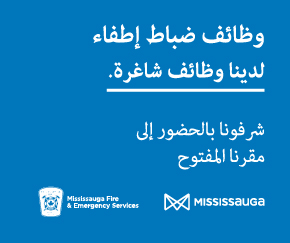اخبار العرب-كندا 24: الأحد 5 مايو 2024 02:16 مساءً
An Alberta wildlife rescue centre is currently caring for 20 injured animals, but says that number could rise into the hundreds over the next couple of weeks.
"It's baby season all over Alberta for pretty much every species," said Scottie Potter, with the Alberta Institute for Wildlife Conservation (AIWC), north of Calgary.
Potter said that from the end of April to mid-June, AIWC begins to take in dramatically more animals, primarily young orphans.
"That can be due to car accidents, attacks from cats and domestic dogs … even something like a parent bird hitting a barbed-wire fence. So these sorts of issues are often the result of human conflict in some way."
Potter said that animal baby season, plus the movement of migratory birds making their way through Alberta at this time of year leads to an all-around surge in wildlife numbers in the province.
Robins, great horned owls, a sharp-shinned hawk and a red fox kit are among those already in care at AIWC. The organization estimates that the number of animals in care during springtime increases by approximately 500 per cent.
While Potter notes that this escalation in rescues is seasonal, others in the province have noticed some more unexpected trends.
Colin Weir is the managing director of the Alberta Birds of Prey Centre in Coledale, outside of Lethbridge.
He said they too rescue more birds at this time of year, for the same reasons Potter mentioned, but adds that extreme weather is now another driver.
Due to drought, some stands of trees in southern Alberta are unable to withstand strong gusts of wind, and therefore struggle to support nesting birds like they once could.
Scottie Potter is with the Alberta Institute for Wildlife Conservation. She says the centre needs to hire more seasonal staff and take on volunteers to keep up with the influx of rescue animals during the spring. (Dave Gilson/CBC)
"There [are] times when trees might completely be blown over," said Weir.
"All the branches become brittle, they break off. So sometimes nests come crashing to the ground as well."
Weir said he's noticed that trees and shelterbelts are starting to die out earlier without proper moisture.
"Any sort of climate change that goes on is always creating new situations that we're only seeing and learning just through observations, whether it be phone calls from farmers and ranchers that are encountering wildlife or from situations that we observe ourselves."
Sometimes, birds are swept out of their nests by winds anyway, brittle trees aside.
"A week ago on Sunday we had quite a high-wind day here in southern Alberta. But it was even windy compared to our normal high-wind standards, and we had quite a few orphaned young great horned owls come into our facility that day," said Weir.
Great horned owls, a resident bird of Alberta, start laying their eggs earlier in the year, meaning their babies are bigger than most species come spring.
"[The young] are opening their wings to stretch them and when a big-wind day comes along then it's quite often they'll get swept up and blown out of their nest."
Weir said the increased urbanization of some bird species has also increased human-animal interactions, at times with negative outcomes.
"Yesterday we had a fellow texted me a picture where some people were rescuing a bald eagle that had been hit by a vehicle on the Stony Trail [in Calgary], and so they were rescuing it there," he said.
Both Weir and Potter note that if people come into contact with wildlife, they should stop to observe before they take further action.
"A lot of animals don't need to be rescued when we think that they might be in distress," said Potter, using the example of jackrabbits, who are left alone by their mothers for extended periods of time.
She added that, while each situation is unique, it's usually quite obvious when an animal is seriously injured and in need of intervention.
"If anybody does see or encounter any wildlife that they think might need assistance, it's best just to watch them, from a distance," said Weir.
"There's risks not only to the wildlife, but to the people sometimes trying to help them. And then the best thing to do is to call the local rescue facility or Alberta Fish and Wildlife."
تم ادراج الخبر والعهده على المصدر، الرجاء الكتابة الينا لاي توضبح - برجاء اخبارنا بريديا عن خروقات لحقوق النشر للغير






